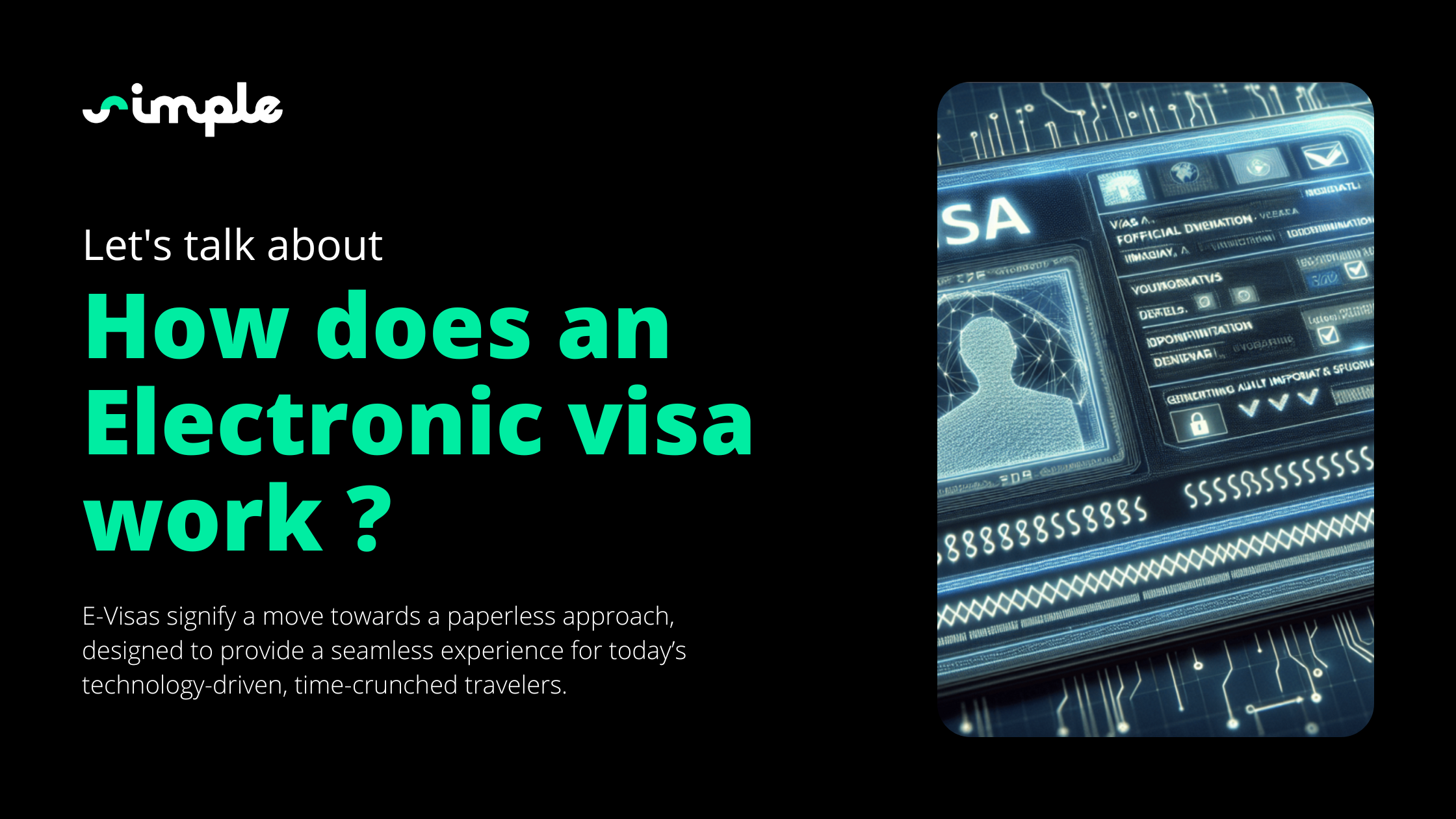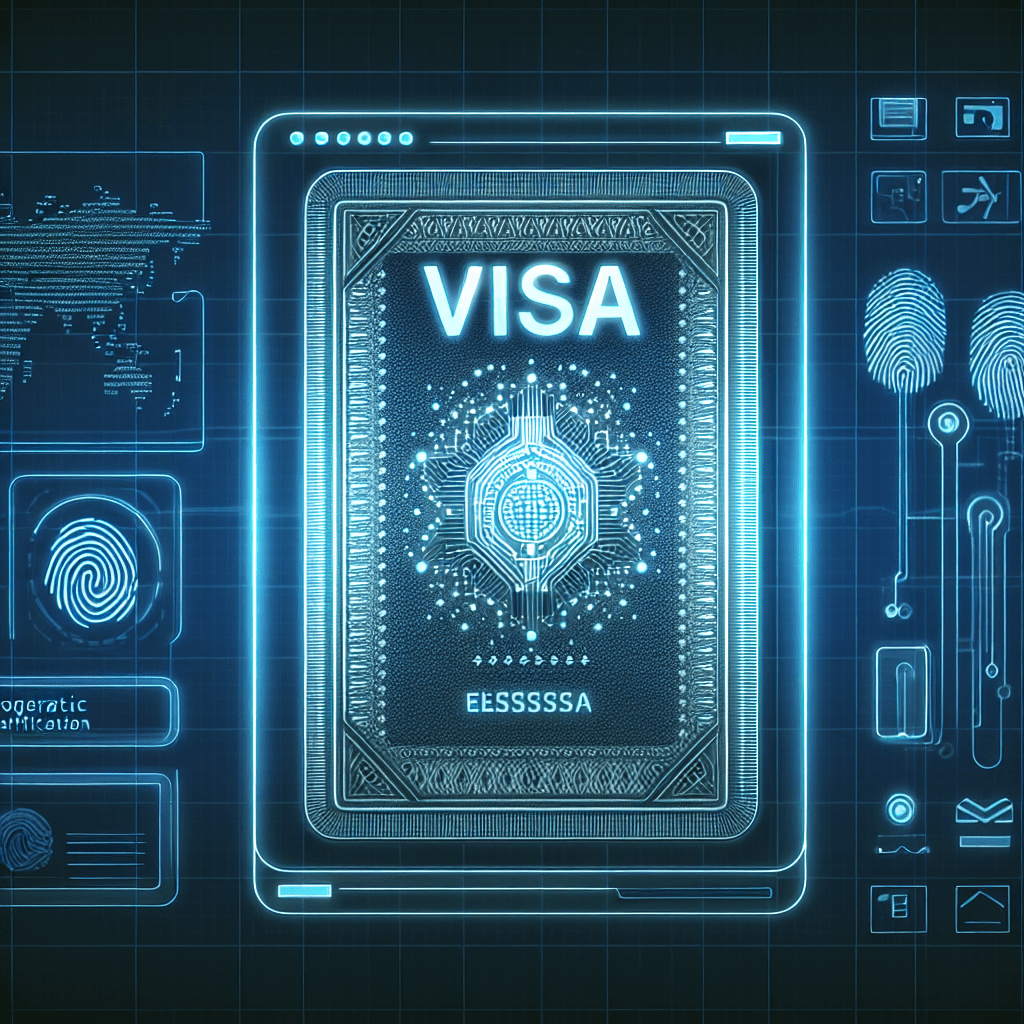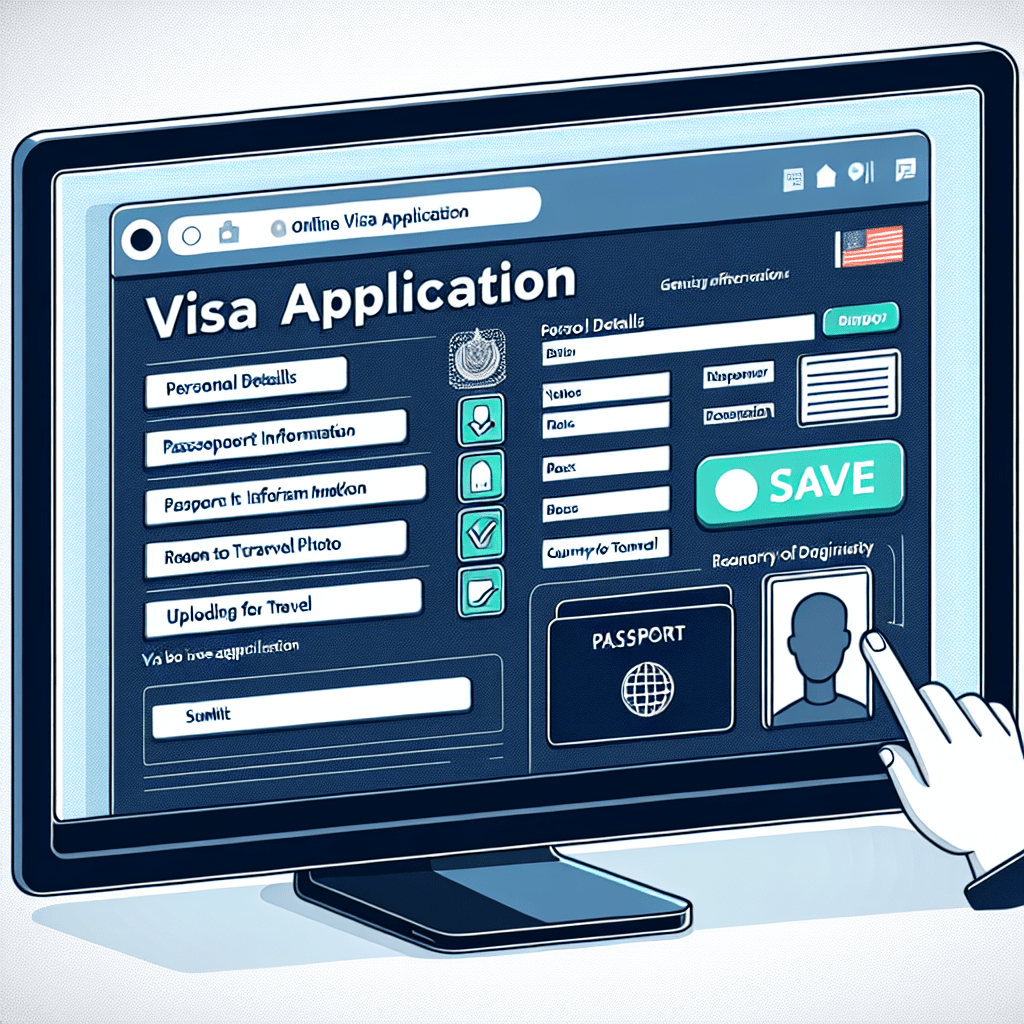How does an electronic visa work?

E-Visas signify a move towards a paperless approach, designed to provide a seamless experience for today’s technology-driven, time-crunched travelers. These digital immigration documents are gaining popularity due to their efficiency and convenience. They are already being used extensively by several countries to streamline their immigration process and enhance security.
Despite their growing use, many of us might still wonder about the process behind this advancement. How exactly does an Electronic Visa work? What are the steps involved in obtaining one? This blog post aims to demystify the E-Visa process, offering readers a comprehensive understanding of how to navigate this modern approach to travel authorization.

The Basics of Electronic Visas
Electronic Visas or E-Visas serve as a digital travel authorization that’s essentially an alternative to traditional visas. They came into existence with technological advancements that digitized immigration processes, offering convenience and efficiency like never before.
Definition and purpose of electronic visas
At its core, an Electronic Visa is an official document indicating that a person is allowed to enter a specific country. The primary difference lies in its digital nature, eliminating the need for physical stamps or visa stickers on the passport. This form of digital immigration document provides an entirely online approach allowing for streamlined online visa applications and approvals without physical interaction.
Brief History
The emergence of Electronic Visas dates back to the early 2000s when the Australian Government developed the Electronic Travel Authority system. Today, numerous countries across global continents have embraced E-Visa systems, regularly updating them to incorporate refined security measures and user-friendly features.
Advantages over Traditional Visas
Compared to traditional visas, the E-Visa system offers various advantages. It provides a simple, web-based visa application process with quick e-visa approval, removing the need for visits to consulates or waiting in long queues. Additionally, all processing and updates, from application to approval, can be tracked online, enabling applicants to stay informed about their application status.
Different types of Electronic Visas
Just as with traditional visas, there are different types of E-Visas designed for various travel purposes, such as tourist or business visits.
Tourist Visas
An Electronic Tourist Visa, as the name implies, is typically intended for individuals traveling for tourism, leisure, or visiting friends and family in a foreign country. This type of visa is often granted with a specific timeframe that the visitor is intended to stick to.
Business Visas
A Business E-Visa, on the other hand, is designed for individuals traveling for business purposes, such as attending meetings or conferences. The application process usually requires more detailed documentation than a tourist visa, since the nature of the visit often carries a longer stay period.
Countries that permit Electronic Visas
Today, a considerable number of countries worldwide permit Electronic Visas. This shift towards digitization is a testament to the e-visa’s increasing acceptance and widespread usage.
List of Countries
Nations offering Electronic Visas stretch across continents, from Australia in the Pacific to the United Arab Emirates in the Middle East, and Turkey and Georgia in Europe, to name a few. Even the United States offers an Electronic System for Travel Authorization (ESTA) which simplifies travel for certain international visitors.
Requirements and eligibility
To successfully secure an E-Visa, applicants must meet certain criteria specific to the country they plan to visit. This may include a valid passport, a digital photograph, a planned itinerary, and, in some cases, proof of accommodations or means of support during your stay. It’s essential to research each country’s specific requirements when planning to use an internet-based entry permit.

Process of Acquiring an Electronic Visa
The process of acquiring an electronic visa typically plays out in an online environment, leveraging the tremendous benefits of online visa systems. One can easily secure an e-visa from the comfort of their own home, thereby saving time, effort, and confusion involved in traditional paper-based visas.
Step-by-step guide to applying for an electronic visa
The digital nature of e-visas make the application process a straightforward, user-friendly procedure. Here is a glimpse of the general steps:
Qualification Check
Before initiating any application, it’s critical to verify if the destination country offers an electronic visa option for your nationality. Many countries will have an online tool that can quickly ascertain your eligibility for an online visa application.
Application Process
If you are indeed eligible, you would typically navigate to the specified website or application portal of the country you are planning to visit. Here, you will be required to fill out an electronic form consisting of personal, passport, and travel-related information. It’s essential to provide accurate information as discrepancies may result in disqualification or delays in e-visa processing.
Documentation Required
The documentation required for an e-visa typically varies based on the type of visa and the country issuing it. However, mandatory documents usually include:
Mandatory Documents
A valid passport, a digital photograph, and details of your travel itinerary are often mandatory for most electronic tourist visa applications. For business visa applications, additional documents such as an invitation from the attending organization or evidence showing you’re financially equipped to sustain the trip may be required.
Delivery and Confirmation of the Process
After finishing the application process and submitting necessary supporting documents, you’ll usually receive an email confirmation or a tracking ID to keep tabs on your application’s progress. Upon approval, the electronic visa will be sent directly to you via email, eliminating any need for physical visa stamps or stickers.
Fees and Processing Time
The costs associated with e-visas generally differ depending on the issuing country and the visa type. However, e-visas typically come with an associated processing fee, paid online at the time of application.
Overview of Costs
E-visa fees typically cover the cost of processing your application and are therefore non-refundable. It’s essential to review the fee structure before initiating the procedure, as some countries may charge additional fees such as “urgency fees” or “service charges.”
Average Timeframe
The processing time for an e-visa varies widely depending on the destination country and can range from a few hours to several days. However, thanks to the efficiency and speed of the digital visa system, e-visas often offer quicker processing times than traditional visas, especially if you opt for an expedited service when available.

Using an Electronic Visa
Once an electronic visa has been successfully acquired, the focus shifts to its utilization. How does one use an e-visa and what are the specifics involved? In this section, we’ll delve into these details, exploring everything from its use upon arrival to handling potential issues.
How to use an Electronic Visa
Using an electronic visa is remarkably effortless, primarily because of its digital nature. However, there are a few key points to consider to ensure a seamless experience.
Upon Arrival
Upon arrival in the destination country, travelers are typically required to present their e-visa along with their valid passport to the immigration officials. Some countries require you to print out the electronic visa confirmation, while others may suffice with a digital copy on your phone or tablet. It is critical to research such specific requirements of the intending country in advance.
Duration and Validity
The duration and validity of an electronic visa vary enormously based on the issuing country and the type of visa. An electronic tourist visa usually offers a shorter validity compared to a business visa. However, the precise duration and the number of entries allowed will be clearly stated on the e-visa document.
Rules and Restrictions
Each electronic visa comes with its own set of rules and restrictions, which are crucial to comprehend to avoid any potential complications during the trip.
Countries and Regions
An e-visa typically allows entry into the issuing country only, and within that, possibly specified regions. Travel beyond these regions may require special permissions or additional visas.
Updates and Renewals
If travel plans change after the issuance of an e-visa, always check whether an update is required. In many cases, you’d need to apply for a new visa. As for renewals, once an electronic visa expires, a new application must be submitted since extensions are typically not offered on e-visas.
Troubleshooting Potential Issues
As with any digital system, potential issues could arise in the use of an electronic visa. However, most issues have straightforward solutions.
Technical Glitches
Occasionally, technical glitches might occur during the e-visa processing, and these can usually be resolved by contacting the relevant customer support or helpdesk. Ensure you have a clear and reliable internet connection while applying for your e-visa to mitigate such issues.
Lost or Stolen Electronic Visas
One of the prime advantages of an e-visa is that it can’t be physically lost or stolen, as it’s electronically linked to your passport. In case you lose your printout or email confirmation, it can easily be reprinted or reemailed. The important thing is to ensure that your passport, the primary travel document, is kept safe at all times.

Embracing the Digital Era with Electronic Visas
The modern world is ceaselessly migrating towards digitization, a shift that is prominently reflected in the realm of global travel. The introduction of electronic visas has massively transformed the immigration landscape, bidding farewell to the days of labyrinthine queues and paper-intensive applications. E-visas have ushered in an era where the visa acquisition process is simply a few clicks away. From online visa applications providing digital travel authorization to easy e-visa approvals, everything resonates with today’s digital and mobile lifestyle.
What stands out about electronic visas is their inherent convenience – the ability to apply anywhere, anytime, eliminates the geographical and time-bound constraints often associated with traditional visas.
Moreover, the efficiency of e-visa processing, which often results in quick approvals, further streamlines a traveler’s journey, making it an excellent fit for the fast-paced environment of the 21st century. Additionally, the simple online processes associated with these internet-based entry permits often imply a user-friendly experience, even for those not technology-savvy.
Electronic visas, however, aren’t merely about convenience; they’re about embracing a smarter, greener, and more efficient way of traveling. They can significantly decrease administrative costs and reduce the environmental impact associated with traditional paper-based systems. Their digital nature also provides improved capacity for monitoring and managing immigration, helping improve cross-border security.
In the grand tapestry of global travel, electronic visas are beginning to dominate, and rightly so. As we move towards an ever more connected world, the simplicity, the efficiency, and the sheer convenience of electronic visas serves as a testament to technological advancements revolutionizing our world. Their relevance in today’s digital age cannot be overstated, not merely as a product of technology’s march forward, but as an emblem of global openness and the desire to make travel accessible for all.